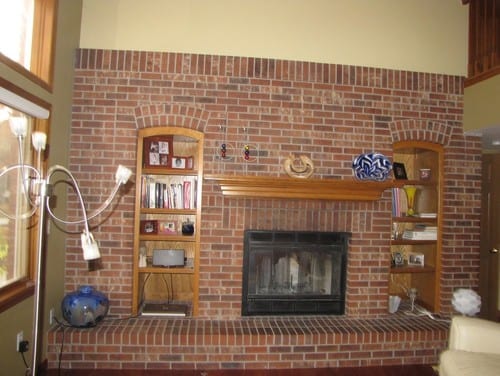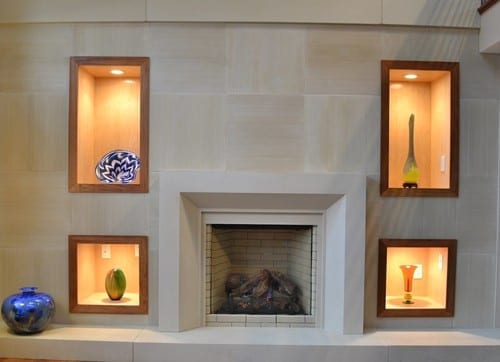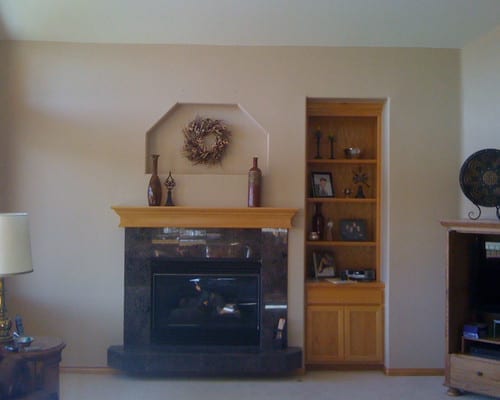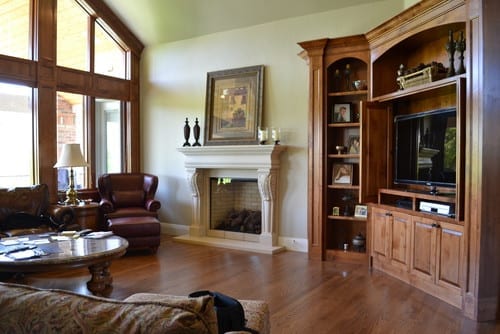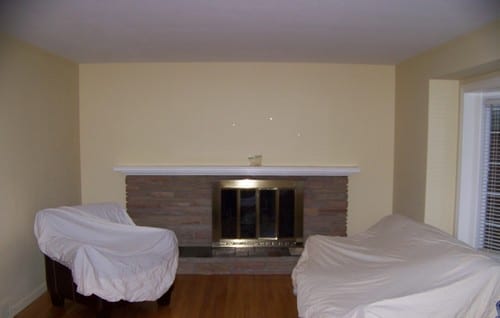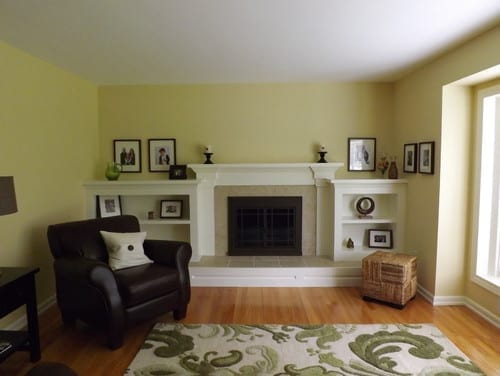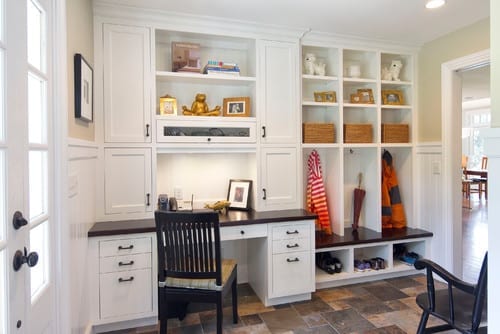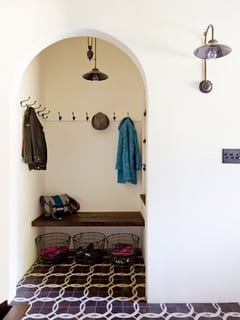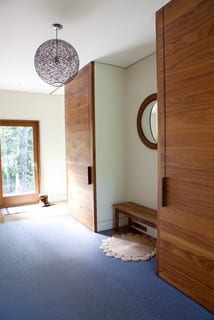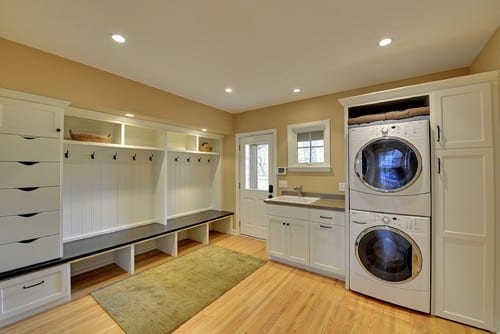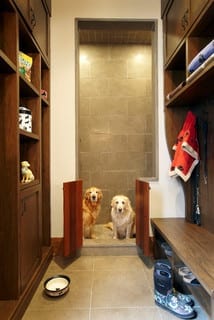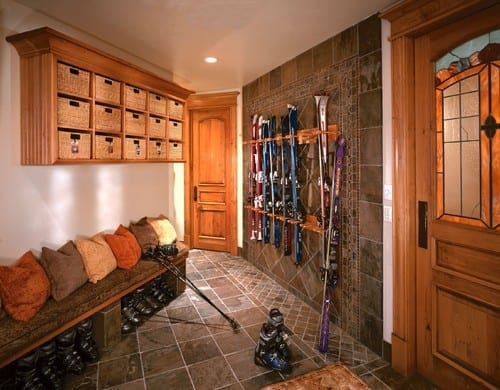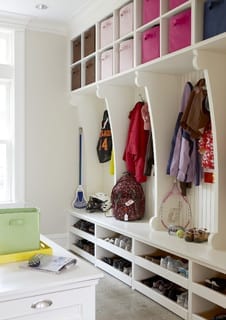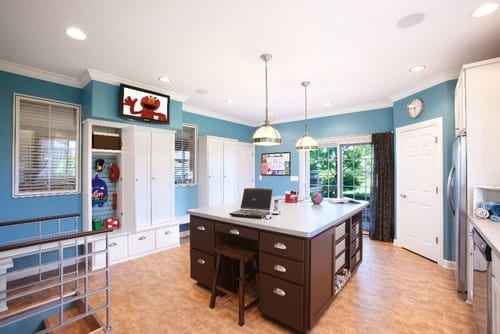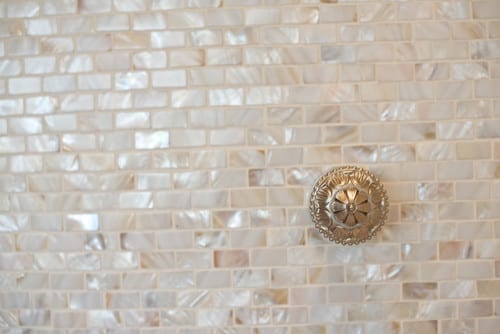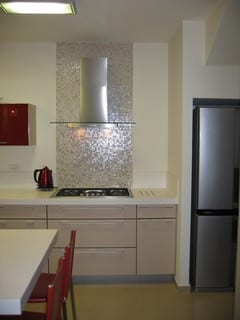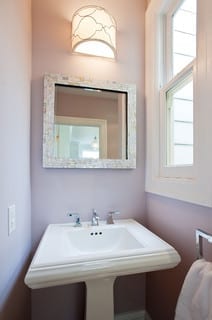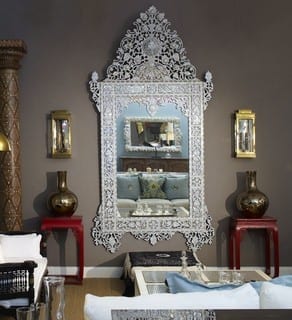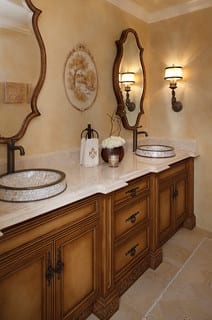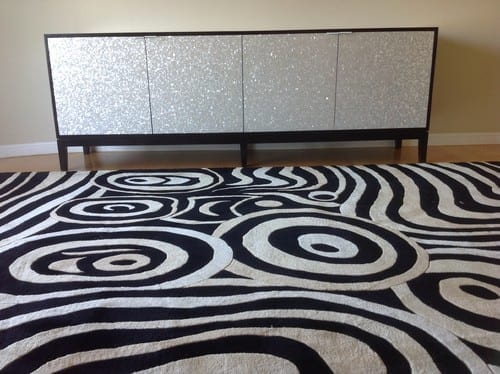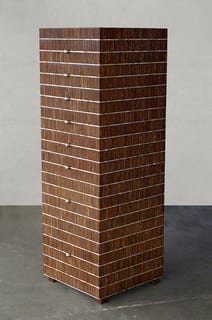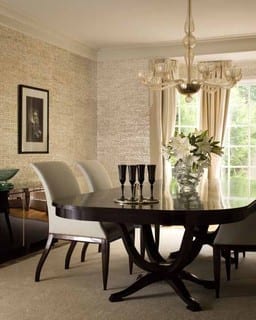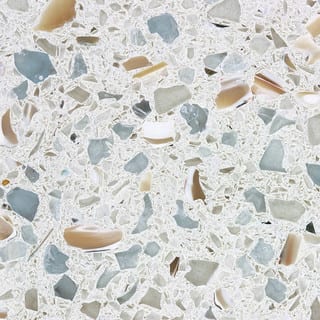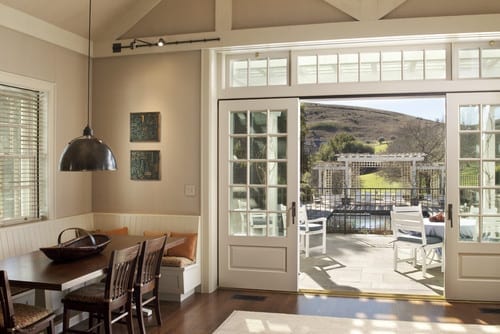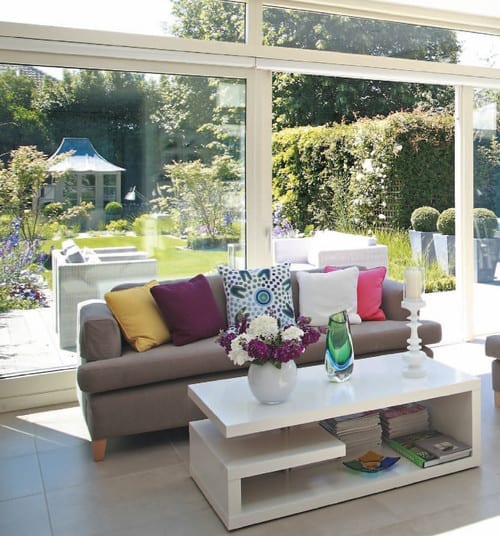Article by: Mitchell Parker
The fireplace is often the most commanding element in any room it’s in. Size and abundance of material are often factors, but as renovation specialist Ron Parko points out, our eyes are naturally drawn to the darkest object in a room anyway. Oftentimes, that’s the firebox when it’s unlit.
Naturally you want this element, and everything that surrounds it, to complement the rest of your home. In many older homes where large brick fireplaces prevail, this can pose a challenge. What do you do? Cover it, paint it, rip it out? Here’s what to consider.
Project: Remodeling a fireplace wall.
Why: Replacing a fireplace wall is mostly an aesthetic choice, but besides pleasing you now, an updated fireplace can also can add resale value.
Who to hire: Someone with plenty of experience remodeling fireplaces is recommended if the job is more than just drywalling or plastering. Someone like Rita Henry, will consult with clients through email and provide renderings and design plans so they can hire a local general contractor to do the actual work.
Brick fireplaces are the most popular to replace. Henry says a quick and easy solution is to simply wrap the brick in either tile or wood, leaving the exposed brick for the firebox. “It’s a more updated look that’s one of the least expensive,” she says. And that way the brick will remain beneath the new material in case a future home buyer prefers brick.
For the brick fireplace shown here, she wrapped the whole thing in tile.
AFTER: The stone tile runs wall to wall, creating a dramatic look. It completely changed the tone of the living room in this Denver home.
You could also choose to drywall or plaster over the brick, creating a blank canvas that you can then do pretty much anything you want with.
Painting is also an option. While Henry doesn’t prefer the look of painted brick, it’s a relatively inexpensive update that can easily be changed.
For this project Henry ripped out all the existing elements, flattened the niche and cleaned up the wall.
AFTER: A new mantel and built-ins transformed the space. Henry says an upgrade on this scale could be done for around $3,000.
Length of project: A standard drywall installation with mantel and surround can be completed in two days. A custom mantel or more extensive ductwork or electrical installation can take five or six weeks.
For this 1950s fireplace, renovation specialist Ron Parko’s client wanted to add bookcases and extend the hearth to each wall.
AFTER: Because the fireplace is off center, Parko tried to mask it while also extending it out. Raising the elevation made it dominant, while photos and accessories help distract the eye from the imbalance.
Cost: Drywalling over a brick fireplace could run about $1,500. Parko says a 6-foot-wide floor-to-ceiling paint-grade oak or poplar fireplace with a tiled hearth could run around $2,000. Wrapping an entire fireplace wall in stone and adding a custom mantel could run around $9,000. The most expensive remodel Parko did was for $12,000, which included bookcases, hidden drawers and a mantel leg that concealed a shotgun.
Permit needed: Only if you’re altering the firebox, adding a wood burner or converting to gas.
Best time of year to do this project: This is a year-round project, but if you’re considering adding hardwood to a room or doing anything to the walls, including painting, it’s best to do the fireplace first.
